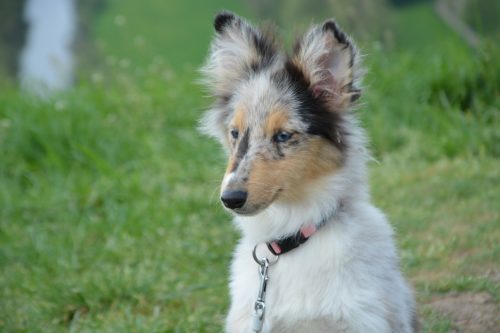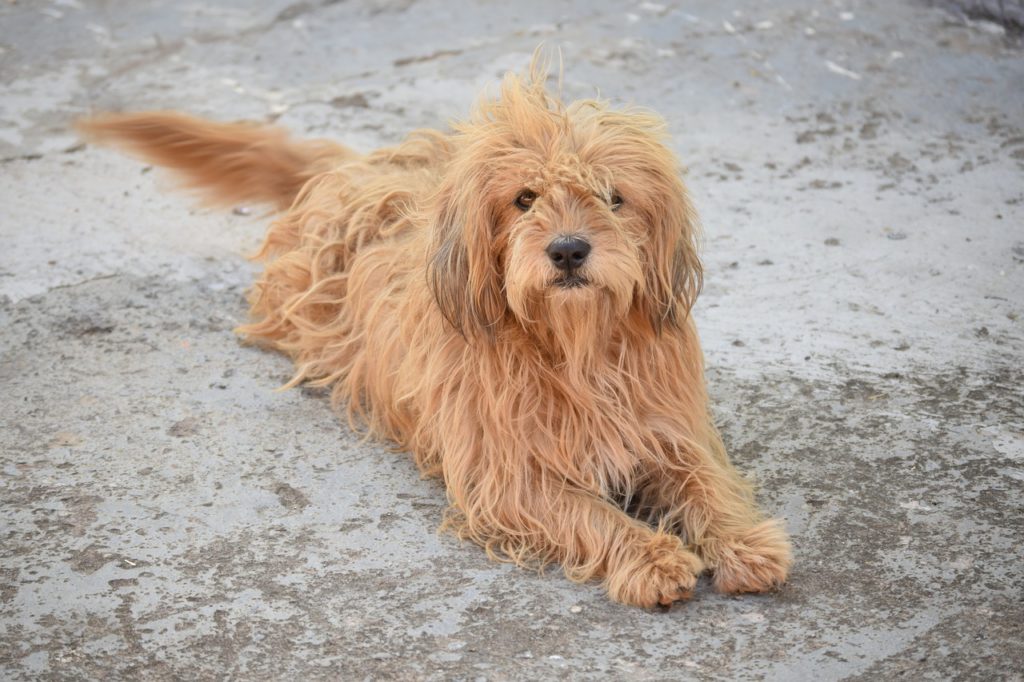Being a pet parent comes with an overwhelming amount of options when it comes to feeding your pup. Some people insist that dogs should only be fed dry food. Others swear by feeding wet food to their beloved dogs. Both sides tend to have strong opinions on their chosen method of feeding. How do you decide which is best for your dog?
You want to do the best you can to keep your pets healthy. Your dog’s diet is important for his overall health, so you want to get it right. There are benefits and disadvantages to both diets for your dog. Here are some things to consider when deciding on dry vs wet dog food.
Dry Dog Food
Dry dog food is a popular option for pet owners. Also known as kibble, this type of food is made through a series of manufacturing steps to produce a dry, commercial food for dogs. The most common methods include pelleting, baking, and extruding. The finished product comes in a variety of shapes, sizes, and ingredients.
Feeding dry food to your dog comes with its own pros and cons. There are plenty of dogs out there that are living happy and healthy lives on dry food only diets. Your individual dog’s health and nutritional requirements will determine if a dry diet is the best fit for your four-legged friend.
Dry Dog Food Benefits
Feeding your dog a dry food diet comes with a variety of benefits for both you and your dog. Here are the most important advantages to consider in a dry food diet.
Convenience
Dry dog food is hands down the most convenient option for feeding dogs. It’s simple to measure out kibble using a dry measuring cup or scoop. You can accurately portion the dry dog food using the same measurement each time you feed your dog. This makes it easy to keep your dog on a routine and manage their weight. Dry foods will have feeding guidelines, but your dog’s nutritional requirements depend on age, breed, and other individual health factors. If you have questions about how much your dog should be eating then you should consult with your vet.
The nature of dry dog food means that it can sit out without spoiling. This allows for free feeding. Some people prefer to feed their dog controlled portions at certain times of the day, but others like to leave food in their dog’s bowl so they can eat as they please. Dry dog food makes this type of free feeding a possibility because the kibble won’t spoil while sitting out at room temperature.
Dry dog food can be conveniently transported. You can place the food in a small container or jar to take with you. This is great for times when your dog needs to be boarded at a kennel, the vet’s office, or a doggy daycare. It’s also a nice convenience for taking your dog camping or on road trips with you. Simply measure out the exact amount you’ll need and take it along without the hassle of refrigeration.
Cost
Generally speaking, dry kibble is more cost-effective than other forms of dog food. This is particularly true if you are buying the food in larger, bulk bags. Regardless of the cost or quality of dry dog food, it’s unlikely that the kibble will go to waste because it takes longer than other dog foods to spoil. It’s always advisable to get the best quality food that works with your budget so you get the best nutritional bang for your buck.
Dental
Some dry dog foods are designed with shapes that are meant to help with your dog’s dental health. The abrasive texture of the pieces in dry dog food assist in keeping your dog’s teeth clean. There’s a wide variety of shapes and sizes when it comes to kibble so you can find the right one for your dog’s specific needs. Dogs with healthy gums and teeth should not have any problems chewing on dry dog food pieces. However, some healthy dogs with poorly aligned jaws or small mouths could have issues chewing on hard food.
Storage
When you open a new bag of dry dog kibble you have the luxury of it not spoiling quickly. Even when the food is purchased in large bags you can keep opened dry dog food for weeks to several months before it goes bad. The amount of time the food will stay fresh depends on the brand and ingredients. Check with the manufacturer if you have questions about the length of time the food will stay fresh.
Dry dog food is easy to store. You can purchase it in small or large quantities depending on the amount of space you have for storage and how much food your dog eats. The dry kibble can be stored in its original container or you can transfer it to a sealed bin. Bins should be made of plastic, glass, or metal such as a trash can or storage tote with a tight lid. Containers with wheels can make transporting the food even easier.
Dry Dog Food Disadvantages
A dry dog food diet isn’t without its disadvantages. Here are some of the reasons that dry kibble might not be a good option for your pup.
Hard to Chew
The texture of dry kibble can be beneficial for some dogs, but for others, it can be painful to chew. Biting down on dry food can hurt dogs with dental issues like tooth decay or gum disease. It can also be difficult for dogs with certain facial structures or older dogs with missing teeth. Your dog might be showing signs of pain if you notice a refusal to eat or a struggle to chew hard food. A softer diet could be a better choice in these cases. Be sure to discuss with your vet if you notice your dog experiencing pain or an inability to eat.
Less Palatable
Dogs often find dry kibble less appetizing than wet dog food. Dry food tends to be less flavorful and appealing in comparison. This can be a problem if your dog is a picky eater. It may take a bit of experimenting to find a dry kibble that both you and your dog are happy with. Luckily, there are plenty of nutritious varieties and flavors on the market to choose from.
Low Fat
Dry dog food is often low in fat and higher in carbohydrates as part of its design. Active dogs will often need a higher fat diet. As the fat content increases in a dry food so does the cost. If you’re feeding dry food for the cost savings alone and your dog requires a high-fat diet, then it might not be cost-effective to feed a strictly dry diet.
Wet Dog Food
Wet dog food is a popular alternative to feeding your dog kibble. Wet dog food is manufactured differently than dry food. The process starts by grinding or cutting meat into pieces. The meat is mixed in with a gravy solution and other ingredients while being slowly heated. The resulting food is placed in pouches or cans and then sterilized for safety.
Wet dog food is similar to dry food in that it has its own positives and negatives. Here are the factors that you need to consider when determining if a wet food diet is best for your dog.
Wet Dog Food Benefits
A diet consisting of wet dog food can be balanced and nutritious. Here are some of the positive aspects of a wet food diet.
Easy to Eat
Soft food is simply easier to chew for dogs with smaller mouths, misaligned jaws, or dental problems. If your dog shows signs of difficulty while eating then a wet food diet could be an ideal option to keep your dog comfortable and healthy.
Hydration
Unlike dry food, wet dog food retains a higher moisture content. This is a good thing for dogs that don’t drink enough water on their own or for those that live in hotter climates. This is particularly beneficial for dogs that need to increase their water intake for medical reasons such as urinary tract infections.
Less Processing
The process of producing wet dog food means that fewer preservatives are needed to keep it fresh. The food itself undergoes less processing than its dry food counterpart. This means that the wet food can retain more of its nutrients naturally.
Palatability
It’s no secret that most dogs prefer wet dog food. Many dogs learn to recognize the sound of a can or pouch opening and will come running for their meal. This is because wet dog food is typically more flavorful and aromatic. It encourages aging dogs with a reduced sense of smell or sick dogs with a lack of appetite to eat their food. It’s also a great way to keep any dog interested in their meal.
Wet Dog Food Disadvantages
There are several drawbacks that should be considered when feeding a purely wet food diet. Here are a few to keep in mind.
Cost
Canned or pouched dog food tends to be a bit more expensive than dry food. You also have to purchase the food more frequently because of the smaller packaging. This is not only less cost-effective for you, but also less environmentally friendly.
Dental Health
Owners that choose to feed their dogs an entirely wet food based diet will need to pay close attention to dental health. Without the benefits of teeth cleaning with a kibble diet, your dog could be more susceptible to dental health issues.
Inconvenience
Giving your dog wet food can be an inconvenience. Measuring the correct portion isn’t as simple as measuring dry food. Most dogs won’t need exactly one can or pouch per meal. This means that you may need to open multiple containers per feeding. You might also have leftovers until the next feeding time. Leftovers cannot be stored at room temperature and must be refrigerated. The contents need to be used within a day or two of opening. Without careful planning, you might end up throwing away some of the food.
The storage requirements of canned food can be a problem when traveling with your dog. Bringing an unopened can might not be an inconvenience, but once it’s been opened you will need to refrigerate the contents or end up throwing them out for safety. Unless your brand of dog food has an easy-open lid then you will also need to bring a can opener with you.
Mess
Wet dog food can be messy. Wet food spoils so you will need to clean up your dog’s dish if they don’t finish it within a safe amount of time. Sloppy eaters can easily make a mess with this type of food. You’ll also need to clean utensils used to measure and portion your dog’s food.
Short Shelf Life
Once you open a can of dog food it must be refrigerated and used within a couple of days. Of course, you should always check the shelf life guidelines on the package to know how long your particular brand of dog food can last when opened.
This short shelf life doesn’t just apply to food in the fridge. Once the food is in your pet’s dish they should eat it within a few hours or you risk the chance of it spoiling. It becomes unsafe to eat at this point and should be thrown out for the health and safety of your dog. Many dogs love wet dog food and won’t leave any behind, but if your dog is a slow eater this can be an issue.
Topping Method of Feeding
It can be difficult to make a decision about what to feed after weighing the pros and cons of dry dog food and wet dog food. Pet parents that can’t decide between the two can give their dogs the health benefits of both using the topping method of feeding.
Topping refers to mixing both wet and dry dog food to meet your pet’s nutritional requirements. This can cut back on the expense of feeding an entirely wet food diet while giving your dog the best of both worlds! Many pet owners find that this is the perfect solution to their dry vs wet dog food dilemma.
Is Dry or Wet Dog Food Better?
There is no right answer to this question! What works for one dog might not be best for another. Weigh the pros and cons of each diet to decide which is best for your dog. Your vet can help you decide on the right diet for your dog’s individual needs.




